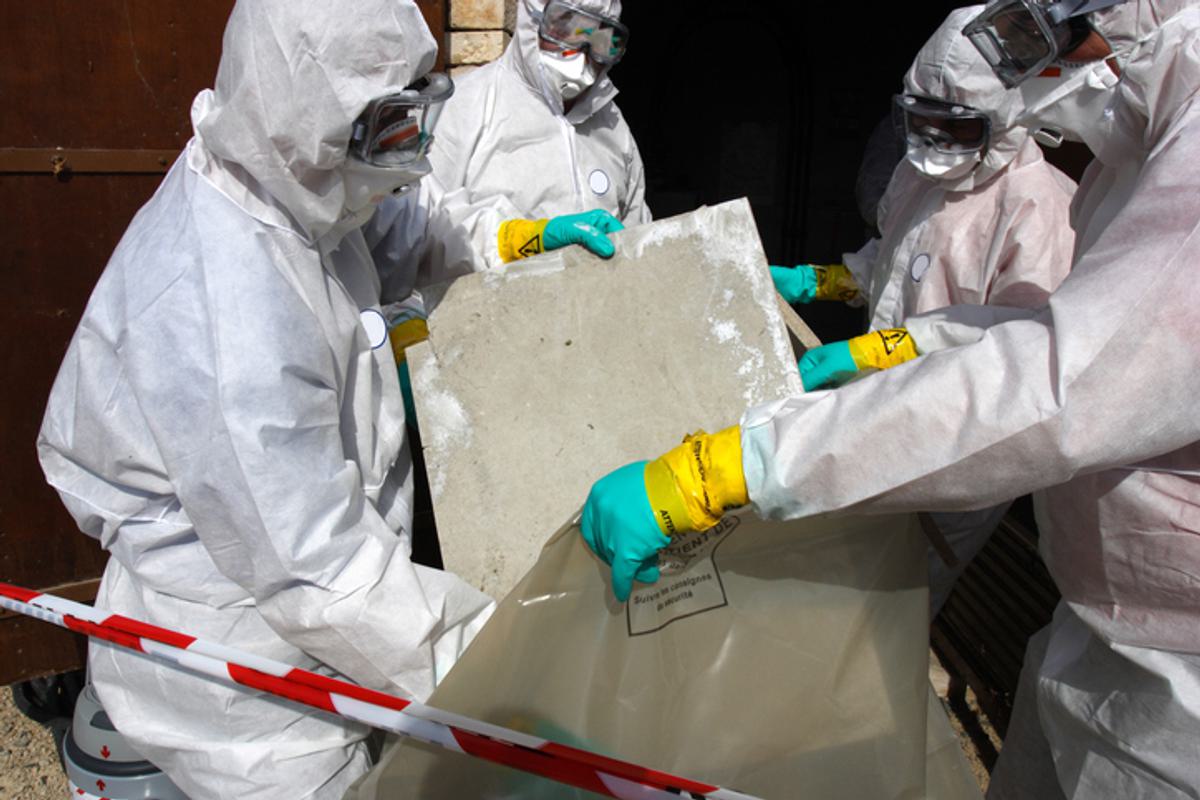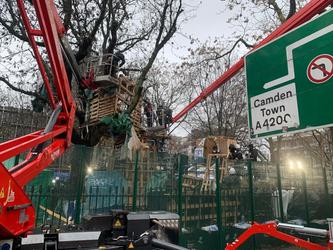Dealing with hazardous materials during an eviction

It is quite common for hazardous materials to be present on site during an eviction. There may be a number of reasons for this:
- Fly tipping
- Material was left there by the previous occupants or landowner
- The occupiers have brought it on site
- The occupiers have been removing items to obtain materials to sell, for example copper or lead
These can pose serious risks to all persons on site, occupiers, enforcement agents and police. In one instance, one of our authorised HCEOs found protesters stripping cladding from cables to obtain the copper wiring inside. What they didn’t realise was that the cladding was made of asbestos and they had no protective clothing, not even a scarf over their face.
Asbestos disposal
When there is asbestos on a site – or its presence is suspected – it is essential to have a team on site who are certified to the relevant professional standard for surveying, safely removing and disposing of asbestos containing materials. They will also deploy a trained and certificated surveyor as part of their team.
They will wear the appropriate protective clothing while inspecting the site and then removing and disposing of the asbestos. The sight of a group of people dressed in full hazmat suits certainly concerned the protesters stripping off the asbestos cladding.
Other hazardous waste
These may also require a specialist, trained and qualified team to ensure they can undertake the survey, removal and disposal of the materials, be they chemicals, biological waste products or contaminated soil.
Whilst working on the enforcement of the compulsory purchase orders for the 2012 Olympic Park, one of our authorised HCEOs had to content with significant soil contamination and the resulting health and safety issues.
Fire
When conducting an eviction, there is always the risk of fire. High-risk areas include locations where electrical connections are made or fuel substances are stored, such as LPG canisters.
If there is a fire, the Fire Brigade will be called, and the enforcement agents and police will remove the occupiers from the area where they are at risk from the fire. Enforcement agents will only tackle a fire after the immediate area has been evacuated if they are trained in using fire-fighting equipment and it would not endanger life.
Proper planning prevents problems
At the heart of the question of hazards sits thorough preparation – site visits, risk assessments, training, and having the right people in place at the right time.
If you would like any further information about the removal of occupiers, whether or not there are hazardous materials on site, please get in touch.



